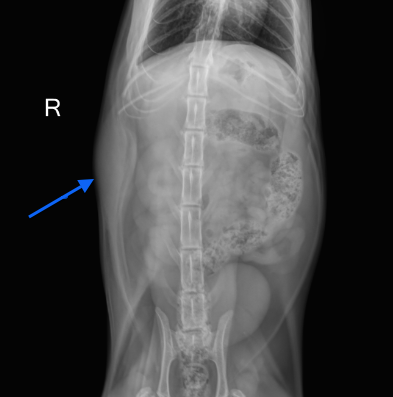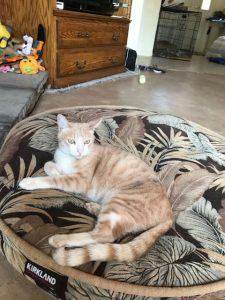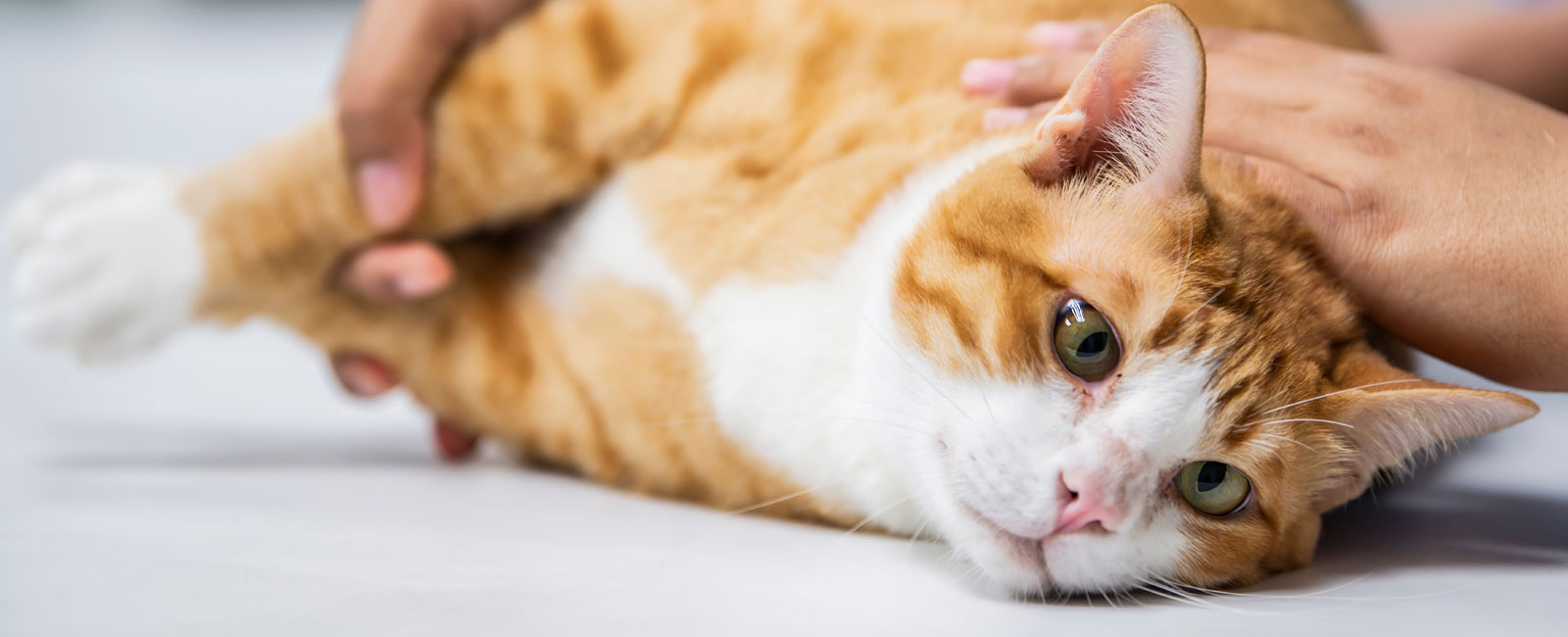
The very elusive and invasive foxtail…in a feline!
Buddy, a 2 year old neutered male domestic shorthair cat with an indoor/outdoor lifestyle, presented to us as a second opinion due to swelling (as arrow depicts) along his right abdomen. The swelling had been present for several weeks and Buddy was very painful, lethargic, and had not been eating well. Radiographs (x-rays) at another hospital showed a possible mass just behind his rib cage and referral to a veterinary oncologist was recommended due to suspicion of cancer. The owner elected to have us evaluate Buddy before seeing an oncologist.
On presentation, Buddy was very painful with a large area of firm swelling on his right side. We collected samples from this area using a needle (a procedure termed “fine needle aspirate”, which is a less invasive form of biopsy compared to a tissue biopsy). The samples were submitted to our diagnostic laboratory for microscopic evaluation (cytology). The results were most consistent with an abscess. Abscess? There was no history of fighting and/or bite wounds, so what could have caused the infection in this area? We intially treated Buddy with oral antibiotics, but the swelling persisted, so we proceeded to “Phase 2”: surgical exploration of the affected area, which would reveal the culprit.




Buddy was anesthetized and prior to exploring the area of swelling, ultrasound was used to locate fluid pockets under the skin. An incision was made over the pockets and an area resembling a bubble was identified between the muscle bellies. This bubble was the abscess and the fluid was sampled to determine the type of bacteria causing the infection and the most appropriate antibiotic for treatment. The area was flushed and a small piece of plant material emerged from the wound. The culprit of the chronic swelling was a foxtail! We suspect Buddy had swallowed or inhaled the foxtail and it migrated, as they aggressively do, resulting in the observed symptoms. Buddy recovered uneventfully and, with the help of a drain to permit any remaining pus to escape, healed well.
During the healing period, Buddy took antibiotics and pain medication. The drain was removed about 5 days after the procedure. The owner kept him inside to monitor his progress. Buddy was acting more like himself as the days went on; his appetite and energy increased and he wanted to play outside again.
Foxtails are no joke! They can be very elusive and despite their small size, they can cause big problems! Regularly checking your pets, especially between the toes and around the ears, for these potential foreign bodies is key. Long-haired dogs are most at-risk as these awns will attach to their fur and embed in their skin.









